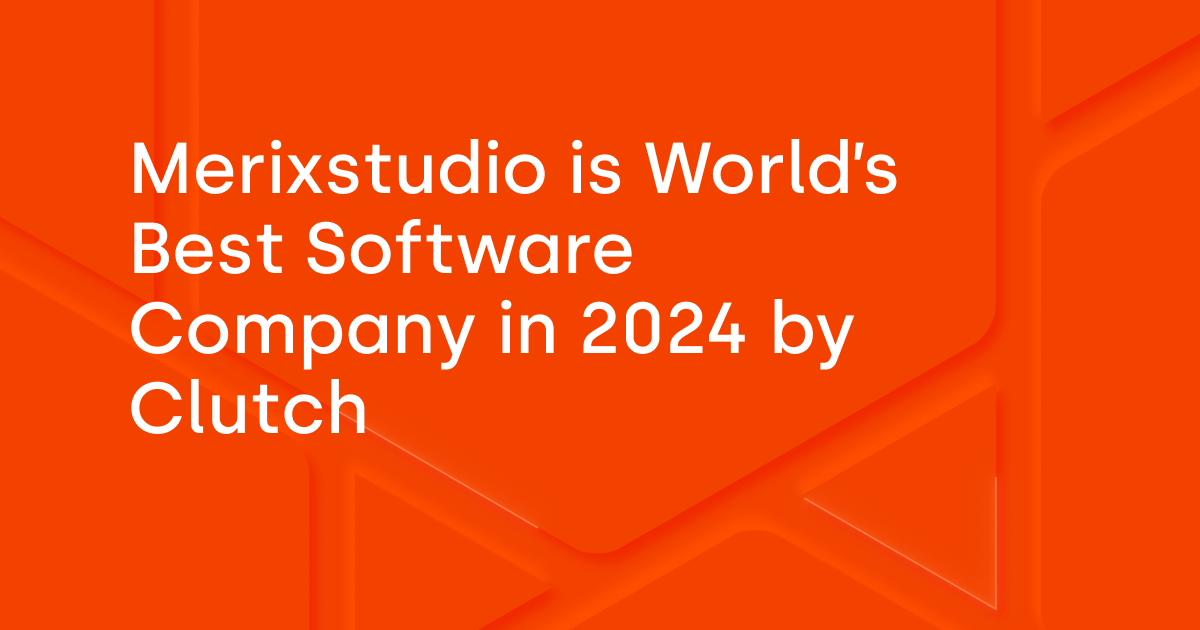Our AI adoption journey: From experiments to 10% productivity gains
Why we didn't just "buy AI" - and what we did instead
As a Head of Technology, navigating the last few years of AI hype has been… let’s say interesting. Most teams already use it in one form or another - through Copilot-like assistants, chat-based tools, or automation scripts quietly running in the background.
At Merixstudio, we knew we couldn't just ignore it. But we also couldn't allow it to seep in "through the back door" - with people using various unvetted, unvalidated tools. Our security and quality standards, backed by ISO 27001 and ISO 9001 certifications, are non-negotiable. Chaos is not a delivery model. Simply "buying AI" isn't a strategy, either.
What separates real adoption from experimentation is the ability to measure impact and manage risk. Our initial, informal experiments with tools like GitHub Copilot gave... mixed results. We saw flashes of potential, but we also saw a lot of developer frustration. Their feedback was a critical insight. It proved that without a structured framework, AI would be a gimmick, not a productivity driver. We needed a pragmatic, measurable, and secure approach, which meant we couldn’t just buy licenses - we had to launch a formal internal adoption initiative.
Turning AI Experiments into Measurable Progress
First, we listened. We ran an internal survey to get a baseline. What were people already using? What were they afraid of? The data showed a fragmented landscape of tool usage and a wide spectrum of skills and concerns, mainly about privacy and code quality.
.png)
Based on this data, we built a formal process:
- Centralized, vetted toolkit: We invested in a set of paid, secure, enterprise-grade tools where we could centrally manage security and data policies .
- Formal AI Policy: We drafted and implemented a clear AI Policy and security checklist that every employee must follow.
- Education: We rolled out internal training, knowledge-sharing channels, and presentations to ensure everyone understood how to use these tools effectively and safely.
After three months of this structured approach, we ran the survey again. The results showed increased team satisfaction with AI tools and a perceived productivity boost of 10.17%. This was a validating figure, as it aligns perfectly with formal research from MIT/Accenture, which places similar gains in the 7.5% - 8.7% range. And perhaps the most telling statistic? 100% of our QA engineers stated they would not want to return to working without AI support.
The Human-in-the-Loop Imperative
This leads to our core philosophy: AI is a tool to augment, not replace, human expertise.
There's an irony to the AI hype. As the Nielsen Norman Group aptly put it, "while AI promises to close skill gaps, it works best in the hands of people who understand the craft". AI is fantastic at executing specific, well-defined tasks. It is, however, less adept at understanding business logic, user nuance, or long-term architectural strategy. It has no "taste" or "context".
So for us in Merixstudio, AI usage is about blending the craftsmanship and experience of our senior-level team with the efficiency of intelligent automation. The best results come from teams that already understand their domain deeply. AI helps them move faster and explore broader solution spaces, but it doesn’t remove the need for judgment, creativity, or technical rigor.
Adoption also depends on culture. Teams that treat AI as a collaborative tool, not a competitor, learn faster and achieve better outcomes. Continuous training and open discussion about limitations help maintain that balance.
AI in Action: Our Workflow in Practice
So, what does this "augmentation" actually look like? Here is a practical breakdown of how AI is embedded in our lifecycle.
How do we use AI in Code Development?
For our engineers, AI is a "copilot" in the truest sense. It's not the one flying the plane or deciding the destination - that’s the job of our Tech Leads and Senior Developers, who design the system architecture.
.jpg)
Instead, we use tools like GitHub Copilot and Cursor to accelerate key tasks:
- Automating the obvious: Writing boilerplate code, generating functions, and creating unit tests. This is AI's biggest strength.
- Refactoring & bug detection: AI is excellent at analyzing code, suggesting refactoring for clarity, and identifying potential bugs or "code smells."
- Modernizing legacy code: This is an underrated capability. Language models are powerful tools for analyzing complex, often poorly documented, legacy code. They help our team understand it and suggest modern refactoring paths.
However, AI-generated code is rarely production-ready. It can be fast but also overconfident, making human review essential. That's why AI-generated code is never blindly trusted and goes through a profound code review process. This oversight is essential to catch "hallucinations" and ensure the code is not just functional but also maintainable, scalable, and secure.
How do we use AI in Quality Assurance?
Our QA process is governed by our ISO 9001 quality management system. AI is now a partner in that process. Testers use AI to generate test data, identify visual anomalies, and write or update regression scripts after changes to the application. What AI cannot do well is interpret business logic and usability. It might recognize that a button works, but not whether the workflow behind it makes sense for users or meets regulatory constraints. The final validation of whether a feature behaves as intended for the business and people remains a human-led task.
So the role of QA specialists doesn’t diminish; it shifts toward validation and analysis, using AI as an amplifier of coverage and precision.
How do we use AI in Product Design (UX/UI)?
In product design, AI plays a more subtle role. While tools can generate thousands of interface variations or suggest microcopy in seconds, good design still depends on human intuition.
%20(1).jpg)
We’ve found that the best use of AI in design mirrors its role in engineering: as an accelerator of iteration.
Our design team uses AI for:
- First draft and design iteration: Using AI to generate inspirational first drafts based on deep context, treating them as a starting point, not a final design.
- Images and illustrations: Using Midjourney to generate illustrations or photos to quickly explore different visual concepts.
- Brainstorming: Treating AI as a sparring partner to generate ideas for user flows or to help articulate the "why" behind a specific design choice.
- Research analysis: This is a major win. Using tools like NotebookLM (Gemini) to analyze and summarize hours of user interviews, research documents, and workshop transcripts.
- Automation in Figma: Using plugins (Figma AI) for repetitive tasks like renaming layers, generating placeholder UX copy, or creating basic interactions.
Still, even the most advanced AI-generated designs must go through human validation to ensure accessibility, consistency, and ethical integrity. That includes checking for potential biases and verifying that sensitive project data isn’t used for model training.
How do we use AI in Project Management and Operations?
This is the hidden efficiency booster. Our Project Managers use AI as a silent partner to improve project flow and clarity.
By applying natural language models to everyday work, like meeting summaries, backlog management, document preparation, and communication, PMs reduce the time spent on administrative tasks. AI also helps them analyze metrics and data that used to require complex spreadsheets, and refine their communication, from "softening" an email to ensuring technical concepts are clear.
AI doesn’t make the decisions, but it makes the context easier to grasp. It helps surface the right details faster, reduces the friction of documentation, and ensures that decisions are traceable.
Security & Responsibility: AI with Boundaries
AI introduces new efficiency but also new risks. Every interaction with a model potentially exposes proprietary or client data, so security cannot be an afterthought.
Our entire AI adoption process is governed by the strict information security protocols of our ISO 27001 certification. We enforce a zero-data retention policy, meaning we only use paid, enterprise-grade tools that are centrally managed and configured to ensure no project code trains public models. This policy is supported by our standardized, vetted toolkit, where every tool is rigorously approved for its security, data privacy policies, and stability before it's adopted.
.jpg)
Which AI tools do we use at Merixstudio?
- Github Copilot
- Gemini AI / NotebookLM
- Cursor
- Windsurf
- Claude
- JetBrains AI Assistant
- ChatGPT
- Figma AI
- Claude Code
Critically, this ensures that clients retain 100% ownership of their IP and source code; the output of our work, whether human-crafted or AI-assisted, always belongs to them. For us, responsible AI use is about traceability - the ability to explain what was generated, when, and by whom is becoming just as important as writing the code itself.
What our clients gain from our AI-integrated process
Every bit of AI integration in Merixstudio has one goal: to deliver more value to our clients. Our structured approach translates directly into tangible business outcomes:
- Faster project delivery & time-to-market
That 10.17% productivity gain isn't just an internal metric; it's a direct accelerator. By automating repetitive tasks, our developers save hours every week, allowing you to launch your product and start generating revenue sooner. - More efficient budget use
Fewer developer-hours spent on routine tasks means more of your budget is invested in solving your unique, complex business challenges. - Higher product quality & reliability
AI as a partner in our ISO 9001-certified QA process results in more robust, maintainable, and secure software. This means fewer post-launch defects and reduced long-term maintenance costs. - A secure, ISO-backed environment
This is the ultimate outcome. You get to leverage the speed and power of AI without the risks. Your intellectual property is protected within our secure, ISO-certified environment.
In short, our clients receive a higher-quality product, delivered faster, with a transparent and secure process from start to finish.
%20(1)%20(1).jpg)
Building for adaptability, not chasing features
As the AI landscape changes almost every day, we focus on building adaptability rather than chasing every new feature. The next frontier seems to lie not just in code generation, but in integrated decision support - AI systems capable of analyzing product details, performance metrics, or user feedback and turning them into actionable insights for teams.
Our approach is simply about making that happen in a responsible, measurable, and secure way. The biggest impact comes from incremental improvements that accumulate over time, less context switching, fewer repetitive tasks, and faster access to information. And perhaps that’s the most realistic way to think about innovation today: not as a revolution, but as a disciplined evolution of how we work.
.svg)

%20(1).png)


.png)
.png)

.svg)
.svg)
.avif)

.avif)
.avif)
.avif)
